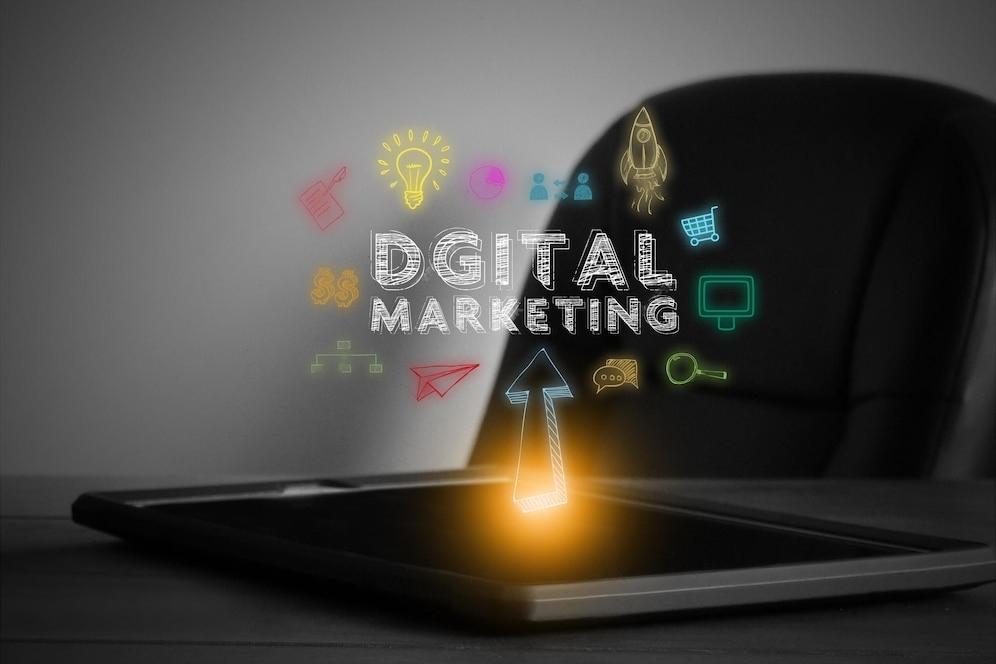How to Optimize for Google Maps & Local Packs in a Voice-First World
20 Key Advertising Trends To Watch in 2024
In the dynamic world of advertising, staying ahead of the curve is crucial for brands looking to make an impact. As we dive deeper into 2024, the landscape of advertising continues to evolve, driven by technological advancements, changing consumer behaviors, and emerging market trends. From immersive experiences to purpose-driven campaigns, here are 20 recent trends in advertising to watch out for this year.
The Evolution of the Advertising Industry:
Advertising, as we know it today, has undergone a remarkable transformation over the decades. From simple print ads to sophisticated digital campaigns, the industry has evolved in response to technological advancements, changes in consumer behavior, and shifts in cultural norms. Let’s delve into the fascinating journey of how advertising has changed over the years.
The Early Days: Print and Radio Era
In its nascent stages, advertising primarily relied on print media such as newspapers, magazines, and posters. The late 19th century saw the birth of modern advertising, with companies using catchy slogans and illustrations to promote their products. Brands like Coca-Cola and Kellogg’s pioneered the use of print ads, creating iconic campaigns that left a lasting impact.
The advent of radio in the early 20th century brought a new dimension to advertising. Companies could now reach a wider audience through radio broadcasts, sponsoring programs and creating jingles that became part of popular culture. This era marked the beginning of audio advertising, with brands tapping into the power of sound to captivate listeners.
The Golden Age of Television Advertising
The 1950s and 1960s heralded the golden age of television advertising, forever changing the landscape of the industry. Television emerged as the dominant medium for reaching consumers, with brands investing heavily in creating memorable commercials. Advertisers embraced storytelling, producing narratives that resonated with viewers and created emotional connections with brands.
Iconic campaigns such as “I Love Lucy” for Philip Morris and “Think Small” for Volkswagen became synonymous with the era. Television commercials became an art form, with creativity and innovation at the forefront of advertising strategies. Brands competed for airtime during popular TV shows, vying for the attention of millions of viewers.

How Advertising has Changed Over the Years?
The Digital Revolution: Rise of Online Advertising
The turn of the 21st century brought about a seismic shift in new advertisement 2024 with the rise of the internet. The emergence of websites, search engines, and social media platforms opened up a new frontier for advertisers. Online advertising offered unparalleled reach and targeting capabilities, allowing brands to connect with specific demographics and track the effectiveness of campaigns in real-time.
Banner ads, pop-ups, and sponsored content became common forms of online advertising, evolving to adapt to the changing digital landscape. Google’s AdWords revolutionized the way businesses marketed themselves online, introducing pay-per-click advertising that remains a staple of digital marketing today.
Mobile Advertising and the Age of Personalization
The proliferation of smartphones has further transformed advertising, ushering in the era of mobile marketing. With people spending more time on their phones than ever before, brands have shifted their focus to mobile-friendly campaigns. Mobile ads, in-app advertisements, and location-based targeting have become essential tools for reaching consumers on the go.
Personalization has also become a key trend in modern advertising. Brands use data analytics and AI algorithms to create tailored ads that cater to individual preferences and behaviors. Whether it’s personalized email campaigns, targeted social media ads, or dynamic content recommendations, advertisers strive to deliver relevant messages that resonate with their audiences.
Important Advertising Trends to Keep an Eye on in 2024
1. Immersive Augmented Reality (AR) Experiences
With the rise of AR technology, brands are leveraging immersive experiences to engage consumers in new and exciting ways. This is one of the most important new trends in advertising for branding. From virtual try-on for fashion brands to interactive product demos, AR is transforming how customers interact with products before making a purchase.
2. Personalized Advertising at Scale
Advancements in data analytics and AI are enabling brands to deliver hyper-personalized advertising at scale. By analyzing consumer behavior and preferences, advertisers can tailor messages and offers to individual tastes, boosting engagement and conversions.
3. Sustainability and Eco-Friendly Messaging
Consumers are increasingly conscious of environmental issues, and brands are responding by integrating sustainability into their advertising strategies. Eco-friendly messaging, green initiatives, and responsible production practices are becoming key selling points for many companies.
4. Rise of Influencer Marketing 2.0
Influencer marketing continues to evolve, with a shift towards authenticity and transparency. Micro-influencers are gaining prominence for their niche audiences, while long-term partnerships and genuine brand collaborations are becoming the norm.
5. Video Marketing Dominance
Video content remains king in the advertising world, with short-form videos, live streams, and interactive video ads leading the way. Brands are focusing on creating captivating video content to engage audiences across social media platforms and streaming services.
6. Nostalgia Marketing for Emotional Connections
Nostalgia is a powerful tool in advertising trends, evoking emotions and creating strong connections with consumers. Brands are tapping into nostalgia by reviving retro designs, classic jingles, and beloved pop culture references.
7. Voice Search Optimization for Ads
As voice assistants like Siri, Alexa, and Google Assistant become ubiquitous, optimizing ads for voice search is a growing trend. Brands are adapting their advertising strategies to align with the conversational nature of voice queries.
8. Diversity and Inclusivity in Advertising
Consumers are demanding more representation and inclusivity in advertising campaigns. Brands that authentically showcase diversity in their ads are resonating with audiences and building stronger connections with consumers.
9. AI-Powered Chatbots for Customer Engagement
Chatbots are revolutionizing customer service and engagement, providing instant responses to inquiries and guiding users through the purchasing process. AI-driven chatbots are becoming essential tools for brands to enhance customer experience.

10. Micro-Moments Marketing
With consumers constantly connected through smartphones, micro-moments—brief, intent-driven interactions—are becoming crucial for advertising success. Brands are optimizing their ads to be present and relevant during these fleeting moments of consumer decision-making.
11. Shoppable Social Media Posts
Social commerce is on the rise, with platforms like Instagram and Facebook offering seamless shoppable posts. Brands are capitalizing on this trend by enabling direct purchases within social media feeds, streamlining the path to purchase.
12. Interactive Advertising Campaigns
Interactive ads that encourage user participation and engagement are gaining traction. From quizzes and polls to AR filters and gamified experiences, brands are creating interactive campaigns to captivate audiences and drive brand awareness.
13. Social Responsibility and Cause Marketing
Consumers are gravitating towards brands that take a stand on social issues and support meaningful causes. Purpose-driven advertising campaigns that champion social responsibility and activism are resonating with socially conscious audiences.
14. 360-Degree Virtual Tours for Products and Services
For businesses in the travel, real estate, and retail sectors, 360-degree virtual tours are becoming a game-changer. These immersive experiences allow customers to explore destinations, properties, and products from the comfort of their homes.
15. Programmatic Advertising for Precision Targeting
Programmatic advertising continues to revolutionize the digital ad space, offering precise targeting, real-time optimization, and cost efficiency. Brands are embracing programmatic platforms to reach their ideal audiences across devices and channels.
16. Storytelling Through Serialized Content
Brands are embracing serialized content to engage audiences over time and build brand loyalty. Serialized storytelling, whether through social media series, podcast episodes, or video shorts, keeps consumers coming back for more.
17. AI-Generated Content for Personalized Experiences
AI-driven content creation is enabling brands to deliver personalized messages at scale. From tailored product recommendations to custom email campaigns, AI-generated content is enhancing customer experiences and driving conversions.
18. Subscription-Based Advertising Models
Subscription-based services are extending beyond products and into advertising models. Brands are offering premium subscription tiers for ad-free experiences, exclusive content, and personalized offers, catering to subscription-savvy consumers.
19. Authentic User-Generated Content (UGC)
User-generated content is a valuable asset for brands seeking authenticity and social proof. Encouraging customers to create and share content related to their experiences with the brand builds trust and credibility among potential buyers.
20. Hybrid Events and Virtual Experiences
As the events landscape continues to evolve, brands are embracing hybrid formats that combine in-person and virtual experiences. Virtual trade shows, conferences, and product launches offer global reach and accessibility while maintaining the excitement of live events.
The Advent of Native Advertising and Influencer Marketing
As consumers become increasingly savvy, traditional forms of advertising have given way to more subtle and integrated approaches. Native advertising blends seamlessly with editorial content, providing value to readers while promoting products or services. Sponsored articles, videos, and social media posts are examples of native advertising that offer a less intrusive way to engage with audiences.
Influencer marketing has also emerged as a powerful way of new advertise, particularly in the age of social media. Influencers with large followings on platforms like Instagram, YouTube, and TikTok collaborate with brands to endorse products in an authentic and relatable way. This form of advertising capitalizes on the trust and influence that influencers have built with their followers.
How SEO Quartz’ influencer marketing is changing the advertising landscape?
Influencer marketing has become a significant force in advertising, particularly with the rise of social media platforms. Here’s how it can change the advertising landscape:
- Authenticity and Trust: Influencers often have a loyal following who trust their recommendations. By partnering with influencers, brands can tap into this trust and authenticity to reach their target audience more effectively.
- Targeted Reach: Influencers typically have a niche audience that aligns with specific demographics or interests. This allows brands to reach their target market more precisely compared to traditional advertising methods.
- Content Diversity: Influencers create various types of content, from photos and videos to blog posts and live streams. This diversity can help brands showcase their products or services in different formats, making their advertising more engaging and appealing to consumers.
- Social Proof: When consumers see influencers using or endorsing a product, it serves as social proof of its quality and value. This can influence their purchasing decisions and drive sales for the brand.
- Increased Engagement: Influencer marketing often generates higher engagement rates compared to traditional advertising. Since influencers have a personal connection with their audience, their content tends to spark more interactions and conversations.
- Measurable Results: Digital platforms provide robust analytics tools that allow brands to track the performance of influencer marketing campaigns accurately. This data-driven approach enables brands to optimize their strategies and allocate resources more effectively.
- Challenges to Traditional Advertising: As influencer marketing continues to gain momentum, it poses a challenge to traditional advertising channels such as TV commercials and print ads. Brands are reallocating their advertising budgets to include influencer collaborations to stay relevant and competitive.
The Future of Advertising: AI, VR, and Beyond
Looking ahead, the advertising industry shows no signs of slowing down its evolution. Artificial intelligence (AI) is poised to revolutionize advertising with its ability to analyze vast amounts of data, predict consumer behavior, and automate campaign optimization. AI-powered chatbots, personalized recommendations, and predictive analytics are just a glimpse of what’s to come.
Virtual reality (VR) and augmented reality (AR) are also expected to play a significant role in the future of advertising. Brands can create immersive experiences that allow consumers to interact with products in virtual environments, blurring the lines between the physical and digital worlds. From virtual try-on experiences for fashion brands to immersive travel previews, the possibilities are endless.
The Bottom Line
In the ever-evolving world of advertising, these 20 trends are shaping the way brands connect with consumers, tell their stories, and drive business growth. By staying informed and adapting to these emerging trends, advertisers can stay ahead of the curve and make a lasting impact in 2024 and beyond.
Ready to elevate your advertising strategy in 2024? Explore innovative solutions and stay ahead of the trends with SEO Quartz. Unlock new possibilities and reach your target audience with precision and creativity.
 info@seoquartz.co
info@seoquartz.co
 +1 (276) 739-9962
+1 (276) 739-9962










